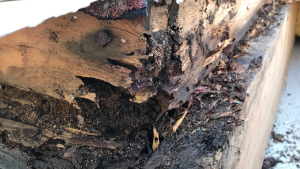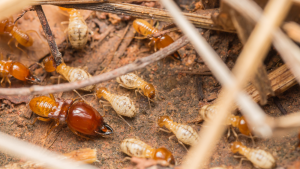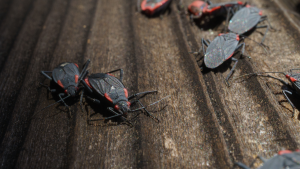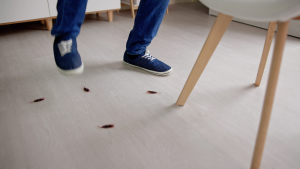If you’re looking for information on how exterminators are able to get rid of one of the most difficult household pests we have to deal with, you’ve come to the correct place.
In this post, we’ll go through the three main measures an exterminator would take to get rid of bed bugs from your house. You’ll also learn about the changes in bed bug treatment over the past 50 years. You might not have all the information you thought you did about bed bug extermination.
We’ll cover the three crucial measures an experienced exterminator will carry out before starting the bed bug control process in our last piece. The ultimate secret to power is knowledge. So let’s get you started so you may successfully ward off these uncomfortable, embarrassing, and remarkably resilient little parasites.
Remember that we can help you if you require Cincinnati bed bug extermination as well.
3 Typical Techniques for Bug Removal
Numerous bed bug remedies are available. You can find conversations regarding mattress covers, furniture interceptors, vacuuming, and steaming on YouTube and in forums devoted to pest management.
Customers frequently ask about them to find out whether they were sensible choices. the prompt reaction?
There is a space for each of them. When assisting a client in getting rid of their bed bugs, we almost certainly combine a few of these methods. However, none of them are strong enough to bring about change on their own.
Only chemical, cold, or heat treatments are effective against bed bugs. We’ll talk more specifically about these three bed bug treatments in this article.
Chemical Therapy
It makes sense and is rather common to want fast solutions. Ask the vast majority of patients whether they would prefer to receive therapy with a single medication or a course of physical therapies. Nine out of ten persons will utilize the medication for obvious reasons.
For insect control, the same holds true.
Let’s begin with a brief history lesson. In the past, bed bugs were exterminated with a pesticide that was frequently sprayed during fumigation. Over the past century, we have relied on a wide variety of hazardous substances, from sulfur to mercury chloride.
Don’t worry, dichlorodiphenyltrichloroethane, which we also can’t name, came after it. Each element is impacted by DDT. Now that we’ve found a solution, we could also get rid of any flaws that may arise in the future. Thanks to this amazing substance, bed bugs can be destroyed at every stage of their life cycles, from eggs to fully formed adults.
So it makes sense to ask: Why aren’t we using this as our default solution right now?
Two words: insecticide resistance.
In the 1960s, we thought bed bugs had nearly completely disappeared from the US. However, there is a big outbreak going on right now.
Worry is the main problem.
DDT-resistant bed bugs are becoming more prevalent. A few of the DDT alternatives created by science were lindane, chlordane, and diazinon, but they all eventually lost their ability to keep up with the insects.
Because they are extremely adaptive creatures, bed bugs have a variety of behavioral, morphological, and biochemical resistance against chemical treatments.
In other words, they kept getting more powerful.
The more chemicals we expose them to, the more chemically resistant they get.
Given this context, it ought to be clear why, even though we currently use chemicals to address the problem, they aren’t necessarily the greatest way to entirely eradicate a bed bug infestation. They are practical. But we required better technologies if we were to eradicate bed bugs.
The requirement for multiple treatments when using chemicals almost always results in more damage to your home and higher overall costs.
Cold Therapy
Once the entire extent of chemical resistance was recognized, exterminators needed to develop a new plan of action.
We came up with the idea of applying cold therapy.
Actually, there isn’t much to explain. Using a machine that spreads frozen carbon dioxide, the exterminator’s goal is to instantly snap-freeze and kill all bed bugs and bed bug eggs on a treated surface.
Because it concentrates on dramatic environmental change, cold therapy completely avoids the problem of chemical resistance and significantly reduces the likelihood that bed bugs may develop biological resistance.
The fact that cold therapy is a non-toxic remedy supports the use of it in place of drugs. The removal of residues and harmful contaminants will considerably enhance the functioning of the environment as a whole.
Do you think there will be a “but” after this?
The following are the primary disadvantages of using cold therapies: Even while they might not be able to adapt to the cold the same way they have to chemicals over time, bed bugs are naturally extremely resistant to it.
Have we already said how challenging these tasks are?
Simply put, the most effective method for getting rid of bed bugs is not by applying cold. Bed bugs can endure temperatures of – 15 degrees Fahrenheit. Before you can claim with absolute certainty that the population has been wiped off, it will need a few days of temperatures in that range.
You are entirely accurate that it would be difficult to carry that through.
Are you conscious of the fact that bed bugs can hide in the cracks and crevices of pillows, mattresses, bed frames, clothing, and other items? By the way, all of that is insulation. The deeper an insect is buried, the more difficult it is to expose it to a lethal cold. The majority of bed bugs, which should annoy you the most, are unaffected.
Not cool enough or not cool at all.
The main problem is that, despite the fact that cold marginally increases our possibilities, it is not a surefire cure.
Heat Therapy
Heat follows. Again, you won’t need a complicated situation to understand how this elimination process works.
Hot air is circulated into a damaged house using fans and a strategically positioned battery of incredibly powerful heaters.
How hot is the temperature are we talking about?
To increase the air’s temperature above 130 degrees Fahrenheit is the goal.
The results show that a bed bug population will start to decline at about 110 degrees. At 120, bed bugs reach the biological threshold at which they begin to virtually rapidly perish.
Finally, a good response is now within your grasp.
Despite their resistance, heat seems to be bed bugs’ biggest—and possibly only—vulnerability that can be employed against them.
The fact that heat is more accessible than cold is another benefit.
Right now, 130 degrees Fahrenheit seems a tad warm. Please be aware that we do not recommend going outside during a heat wave of this magnitude. It is far easier to increase the temperature inside a home to this level of comfort than it is to reduce it to – 15 degrees Fahrenheit.
Did you also know that insulation is where bed bugs usually reside? Although not significantly, it can withstand cold better than heat. Whereas chemicals and cold are less likely to penetrate, heat can.
There is a question raised by all that has been discussed so far. Is boiling bed bugs to death the easiest way to get rid of them? Is it the answer we have all been looking for?
There are, I think, two choices.
Bed bug infestation management is still difficult. Bed bugs are the most inventive, resilient, and contagious insects there are.
Heat, on the other hand, is one of the best treatments we have for concentrating on the little irritants where they are most exposed.
In the vast majority of situations, chemical therapies are used and part of the solution. But based on our significant expertise, heat is the most efficient way to get rid of bed bugs. Despite the fact that it is not a full solution, it must be part of any bed bug removal strategy.
Consider some fundamental logistics as well. Heat treatment is:
- Less disturbance arises from chemical use.
- Easier to implement than cold therapy.
- The best option available in terms of price and security.
How to Choose a Trustworthy Exterminator
You now have more information about bed bugs and the methods we can take to get rid of them. An essential extra element of the bed bug problem is the people who are driving the pests out of the area.
How do you pick a good person?
This is a really important question.
It might be challenging to determine who is being sincere despite the fact that many people declare to offer professional services. Companies with cutting-edge machinery, a wealth of combined extermination expertise, and a strong dedication to entomology generally stand in for the genuine stuff.
It’s crucial to understand what a capable exterminator isn’t before moving on.
3 Fundamentals of Pest Control
No, a licensed exterminator only performs removal. Killing is not enough.
The primary goal of an effective exterminator is to terminate the entire bug life cycle, starting with reproduction. Taking that precaution is the only way to stop bed bugs from entering your home, not just tomorrow but also in six months.
#1: A thorough knowledge of bugs is an exterminator’s best tool.
An experienced exterminator will use just one method:
The adage goes, “This guy’s great because he has all the nasty, deadly chemicals.” For the reasons we outlined above, chemicals are a significant factor to the problem but they are not the only one.
It is uncommon for one bed insect removal method to be effective on its own. However, a knowledgeable exterminator would concentrate on integrated pest management, which expertly integrates multiple eradication strategies to attack pests from different sides.
#2: The most effective method is frequently a dual treatment-control procedure.
The “nuclear” approach is almost never used by an experienced exterminator. Many of our clients believe that we will visit their home armed with toxic weapons and biohazard gear.
Some find this concept unsettling. It gives some individuals comfort.
The disgusting chemical bed bug treatments are no longer employed, though. It doesn’t work. It causes environmental damage. Also, didn’t we state it is a complete failure? There are significantly more effective methods to eradicate bed bugs (such as our friend heat therapy).
#3: Greater harm need not always result from greater efficacy.
Effective extermination involves:
- Questions – Please list the places where you found bug proof. Currently, do you possess any secondhand furniture? What happened in your home before you realized they were there? Do you even remotely? Do you have any pets? Allergies? What kind of therapy strategy will work best for you will be greatly influenced by the answers to these questions.
- Investigation – Considering an investigation when you think about Sherlock Holmes! To pinpoint the particular nature of the problem you’re having, an expert exterminator will perform a forensic inspection of your home.
- Combinations – As years of experience (and a significant amount of excellent study) have repeatedly demonstrated, heat treatment should be a component of every bed bug extermination plan. In addition to the heat treatment, a knowledgeable bed bug exterminator will know how to correctly apply extra chemical treatments.
Final Thoughts
So there you have it. The short version is as follows (too long, didn’t read):
Over time, there has been a substantial evolution in bed bug removal methods. Currently, heat treatment is the industry norm. Aside from being safer and more cost-effective than pharmaceutical therapy alone, it also has those advantages.
Make sure the exterminator you hire asks questions, conducts research, and collaborates to get rid of these disgusting little gremlins from your home. If you follow these suggestions, you’ll be well on your way to a home free of pests (and bug bites!).
Wish to learn more? If you’re unsure whether to use heat or insecticides to treat bed bugs, check out our in-depth advice. Send us an email or give us a call if you live in California and are having problems with a bed insect infestation.





